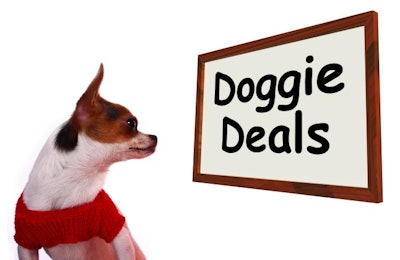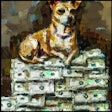
Pet food, like most consumer goods categories, is very cyclical in terms of trends, sales and other measures. Recent data on US pet food spending proves that axiom while indicating interesting patterns and potential opportunities for pet food companies.
By most accounts, sales of pet food in the US increased in 2016: up 4 percent to US$28.23 billion, according to the American Pet Products Association (APPA), or up 3.6 percent to US$31.35 billion, according to Packaged Facts. The disparity probably owes to differences in sourcing and compiling sales and revenue figures. Similarly, you get a different picture when you look at US household spending, as compiled and presented in the US Bureau of Labor Statistics (BLS) Consumer Expenditure Surveys. In that scenario, spending on pet food actually declined 10 percent from 2015 to 2016, according to John Gibbons from PetBusinessProfessor.com.
Specifically, the US BLS data shows US pet food spending of US$26.5 billion, down US$2.99 billion from 2015’s US$29.49 billion. Before anyone starts to panic, it’s worth noting that the data was gathered in 2016 by the US Census Bureau from more than 40,000 interviews and spending diaries, Gibbons said – vastly different sources from actual sales data. In addition, changes to the consumer price index (CPI) affect the spending data.
Pet food spending, like rest of market, driven by trends
Gibbons tracked US pet food spending data back to 1997, which reveals a pattern: Pet food spending seems to rise for two years, then hits a plateau or even declines the third year – exactly what happened in 2016. The exception to this pattern was the period from 2006 to 2010.
“In 2009, the Great Recession caused the first drop in US retail spending since 1956,” Gibbons wrote. “The situation in pet food was even more complex with the melamine recalls in 2007. Pet food prices skyrocketed in 2008 and 2009 as consumers insisted on ‘made in USA’ products … with USA ingredients. The CPI-adjusted sales show that the first recession-related impact on pet food purchases occurred in 2009 but the full retail impact wasn’t felt until 2010.”
Aside from that period, the data seems to confirm what we already know about the pet food market: it’s heavily driven by consumer and product trends. Especially short-term trends, Gibbons noted. While he admitted that’s a rather simplistic explanation, it does jibe with so many other aspects of this dynamic, rapidly changing market. After all, there’s a reason that products like pet food are considered “fast-moving consumer goods.”
Thus, trends like premiumization drove spending for a couple of years, followed by ones like natural and superpremium, along with all the sub-categories and smaller trends comprising those.
Diving deeper into superpremium pet food data
To further understand the decline in pet food spending in 2016, Gibbons looked at more data from US BLS. He found that during a deflationary period, for a necessary spending category like food, consumers don’t buy more but they usually spend less. “Pet food spending dipped in the first half of 2014. This corresponds to the beginning of a two-year deflationary period in this segment,” he explained. “The spectacular lift in pet food spending beginning in the second half of 2014 came from a fundamental change in spending behavior. Consumers began to buy more superpremium food and medicine/supplements in treat form, all of which cost more.”
The fact that spending fell again in 2016 may mean that some pet parents were forgoing superpremium pet food and reverting to lower-priced products – or, it may also indicate the vastly increased competition among pet food brands as well as retail channels. For 75 percent of US consumers overall, price is the biggest factor in their spending, Gibbons noted. “Once a consumer has decided on a specific type of product or brand, there is only one priority: Where and how can I buy it cheaper?”
In terms of retail channels, e-commerce definitely has the potential to further shake up the pet food market, all other trends aside, because pet owners can often find their chosen products and brands cheaper online.
Foretelling the future: faster humanization?
If past pet food spending patterns hold, the outlook for the US market should be more positive by this time next year. “If history continues to repeat itself, we should have a flat first half of 2017,” Gibbons wrote. “Then spending should turn sharply upward as consumers respond to the continued humanization of our pet food.”
While humanization has been a force in the pet food market for some time now, other market experts like Euromonitor have noted that it seems to be accelerating, with the time it takes for an innovation in human foods to leap into pet food measured in mere months. The opportunity for the industry now is to figure out those next innovations to elevate spending from the 2016 decline.



















